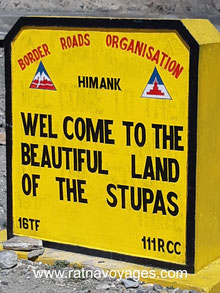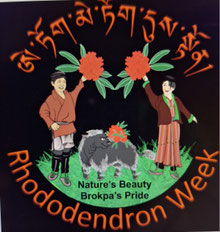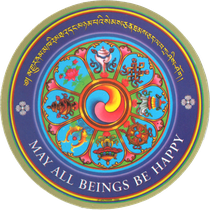LAMAYURU MONASTERY, WESTERN LADAKH


|
NAME/NOM/ NAME/NOME |
LAMAYURU GOMPA YOUGRUNG THARPALING |
|
|
LOCATION/LIEU/ ORT/LUOGO |
Lamayuru Village, 110Km from Leh | |
|
LINEAGE/TRADITION/ SCHULE/ORDINE |
Drikung Kagyu | |
|
FOUNDED/FONDÉ/ GEGRÜNDET/FONDATO |
11th Century | |
|
FOUNDER/FONDATEUR/ GRÜNDER/FONDATORE |
Naropa | |
|
PROTECTOR/PROTECTEUR/ SCHIRMHERR/PROTETTORE |
Apchi Choski Dolma | |
|
SPIRITUAL HEAD/ MAÎTRE SPIRITUEL/ GEISTIGES OBERHAUPT/ CAPO SPIRITUALE |
His Holiness Drikung Skyabgon Chetsang Rinpoche (Head teacher) Skyabje Toldan Rinpoche (living rincarnation) |
|
|
BRANCH/AFFILIÉ/ ZWEIG/AFFILIATO |
Phyang and Sachukul monasteries | |
| WWW./FACEBOOK | www.facebook.com/lamayuru.monastery | |
| FESTIVAL | Yuru-Kabgyat | |
| FESTIVAL 2024 | June 03-04, 2024 |
Lamayuru Monastery - Foundation and Origins
Lamayuru Monastery, also known as Yuru Gonpa, is one of the oldest and largest monasteries in Ladakh, India. Here is a detailed history of Lamayuru Monastery:
Lamayuru Monastery traces its origins back to the 11th century. According to popular legend, the Indian scholar Naropa is said to have meditated in a cave near the present-day site of the monastery. The cave and the surrounding area became known as Lamayuru, with "Lama" referring to Naropa.
Lamayuru Monastery - Religious Affiliation
Lamayuru is associated with the Drikung Kagyu school of Tibetan Buddhism. The Drikung Kagyu lineage was founded by Jigten Sumgön in the 12th century and is known for its emphasis on meditation and the practice of the Six Yogas of Naropa.
Lamayuru Monastery - Geographical Location
Situated in the Leh district of Ladakh, Lamayuru Monastery is perched atop a hill and overlooks the village of Lamayuru. The monastery is set against the backdrop of stunning moon-like landscapes, contributing to its unique and captivating setting.
Lamayuru Monastery - Architectural Features
The monastery complex consists of several shrines, prayer halls, and monks' quarters. The architecture reflects a blend of Tibetan and Ladakhi styles. The main assembly hall is adorned with thangkas, murals, and statues of Buddhist deities. The central courtyard hosts religious ceremonies and festivals.
Lamayuru Monastery - Cultural and Educational Significance
Lamayuru Monastery has been a significant center for religious and cultural activities. It serves as a place of learning for monks who study Buddhist philosophy, scriptures, and ritual practices. The monastery also plays a crucial role in preserving and promoting the rich heritage of Tibetan Buddhism.
Lamayuru Monastery - Rituals and Festivals
The monastery observes various Buddhist rituals and festivals throughout the year. The most famous of these is the annual Hemis Tsechu, during which monks perform sacred masked dances known as cham. Pilgrims and tourists alike gather to witness these vibrant and spiritually significant celebrations.
Lamayuru Monastery - Historical Significance
Lamayuru Monastery has witnessed centuries of Ladakh's history and has survived invasions, political changes, and cultural shifts. Its historical significance is intertwined with the broader narrative of Buddhism's spread and influence in the region.
Lamayuru Monastery - Tourist Attraction
Lamayuru Monastery attracts tourists and pilgrims from around the world. The monastery's ancient aura, coupled with the surreal landscapes of the surrounding Moonland, makes it a compelling destination for those seeking spiritual enrichment and cultural exploration.
Lamayuru Monastery - Conservation and Preservation
Efforts are made to conserve and preserve the cultural and architectural heritage of Lamayuru Monastery. Restoration projects and initiatives ensure that the monastery continues to stand as a symbol of Ladakh's spiritual and historical legacy.
In conclusion, Lamayuru Monastery stands as a testament to the enduring spiritual traditions of Ladakh, offering a glimpse into the rich tapestry of Tibetan Buddhism in the region.






























